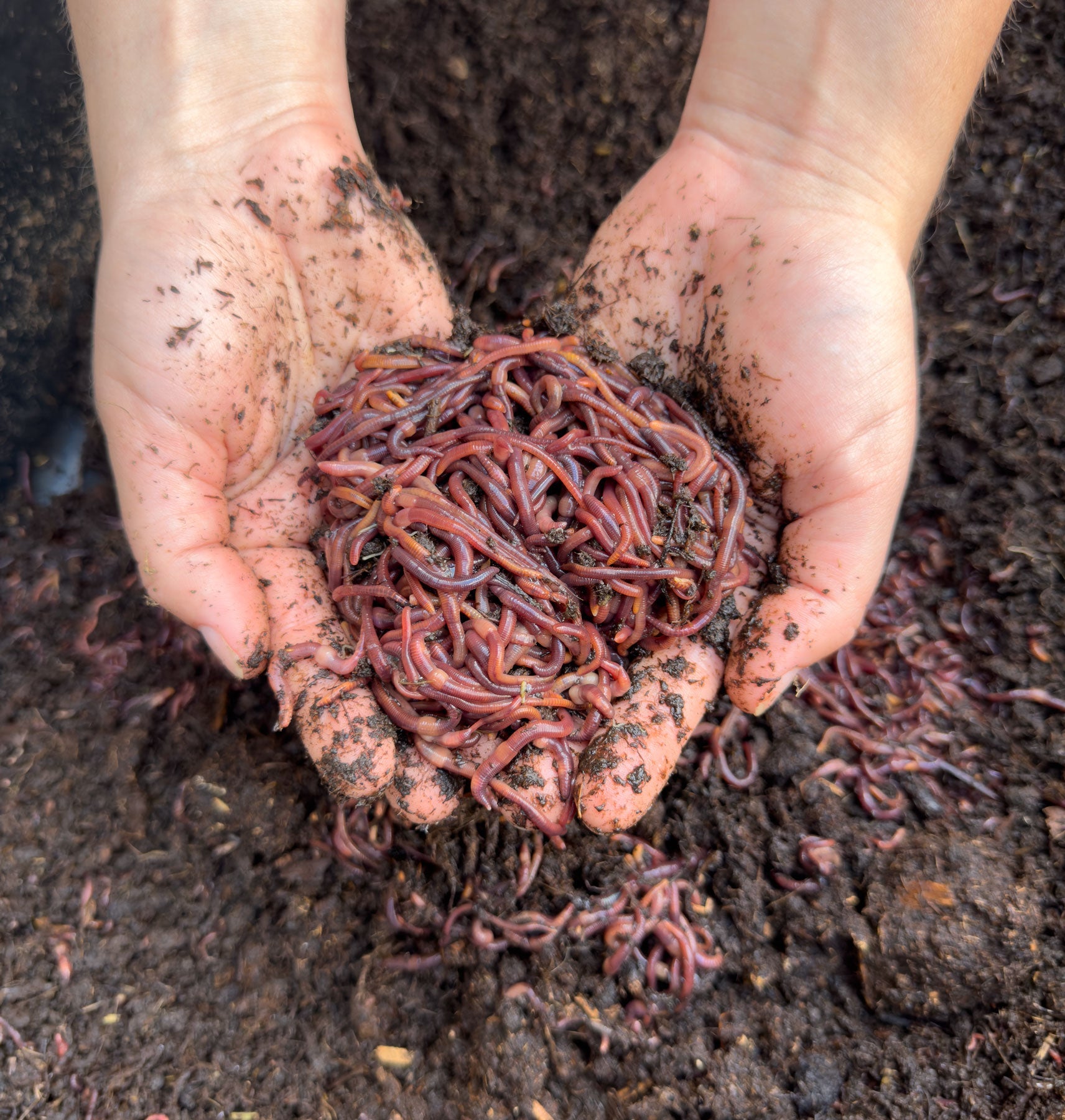Take Care of Your Lawn with the Best Products from Lake Hickory Bait
Take Care of Your Lawn with the Best Products from Lake Hickory Bait
Blog Article
Unlock the Secrets of Red Wigglers: Your Guide to Composting Success
The assimilation of red wigglers into composting practices offers a substantial chance for enhancing dirt wellness and advertising sustainability. Comprehending their needs and actions is vital for enhancing their potential, from establishing up an ideal worm bin to feeding them the right products.

What Are Red Wigglers?
(Lake Hickory Bait)Red wigglers, clinically referred to as Eisenia fetida, are a species of earthworm largely used in composting because of their remarkable capacity to break down natural matter efficiently. These worms are defined by their reddish-brown coloration and a segmented body, typically measuring in between 3 to 4 inches in length. Unlike various other earthworm species, red wigglers prosper in rich, natural environments, making them suitable for vermicomposting systems.
Native to North America, they are typically found in rotting fallen leaves and compost heap, where they play an essential function in nutrient recycling. Their adjustment to residing in a wet, aerobic atmosphere allows them to consume big amounts of natural waste, breaking it down right into nutrient-rich spreadings that boost dirt health.
Red wigglers reproduce quickly, with a solitary worm qualified of generating numerous cocoons each week, each having multiple hatchlings. Understanding the biology and behavior of red wigglers is important for maximizing their capacity in composting applications.
Benefits of Using Red Wigglers
Taking advantage of the power of red wigglers in composting uses countless advantages that boost dirt wellness and advertise sustainable waste administration. These amazing microorganisms successfully damage down raw material, transforming kitchen scraps and backyard waste right into nutrient-rich vermicompost. This completed item is exceptionally advantageous for plant growth, as it boosts dirt structure, increases moisture retention, and boosts nutrition schedule.

(Red Wiggler Express)In addition, the existence of red wigglers in your composting system can accelerate the composting process, generating premium compost in a portion of the time contrasted to conventional approaches. The castings produced by these worms are likewise including beneficial microbes that even more improve the soil ecosystem.
Establishing Up Your Worm Bin
Producing an effective worm bin is a straightforward process that can considerably boost your composting efforts. The initial step is choosing an ideal container. Worm bins can be made from plastic storage containers, wood boxes, or commercially readily available worm bins. Make sure the container has sufficient water drainage and ventilation holes to preserve optimal dampness levels and air flow.
Following, prepare the bed linens product, which offers as the worms' environment. A mix of shredded newspaper, cardboard, and coconut coir functions well, providing a comfy environment for the worms.

Feeding Your Red Wigglers
To make sure the health and wellness and productivity of your red wigglers, it is necessary to provide them with a well balanced diet plan that meets their dietary requirements. Red wigglers thrive on a varied range of natural materials, which not just supply required nutrients but additionally promote reliable composting.
Begin by including kitchen area scraps such as veggie peels, fruit cores, and coffee grounds. Stay clear of citrus fruits, onions, and garlic, as these can be damaging to worm wellness. In addition, introduce shredded paper, cardboard, and completely dry leaves to produce a well-aerated environment.
Feeding regularity should be kept an eye on; generally, worms can take in half their body weight in food weekly. It is crucial to stay clear of overfeeding, as excess food can lead to undesirable odors and attract parasites. A good method is to include food in small quantities, permitting worms to process it prior to presenting much more.
Keeping moisture levels is likewise essential; the bedding must perspire but not soaked. Lastly, make sure to routinely inspect the temperature level and pH degrees of the container to guarantee an ideal setting for your red wigglers, ultimately enhancing their composting effectiveness.
Harvesting and Using Garden Compost
A successful composting process with red wigglers culminates in the abundant, dark garden compost referred to as vermicompost, which can substantially boost soil wellness and plant development. Harvesting this nutrient-dense product typically takes place every three to six months, depending on the size of your system and the amount of raw material being processed.
To harvest, gently different the compost from the worms and any undecomposed products. One efficient approach includes moving the materials of the bin to one side and including fresh bed linen and food to the empty area, motivating the worms to migrate. After a few days, the garden compost can be collected from the opposite side.
It is vital to utilize vermicompost appropriately to maximize its benefits. It can be utilized as a top clothing for yard beds, combined into potting dirt, or brewed right into a nutrient-rich liquid plant food referred to as "worm tea." This application approach assists to deliver necessary nutrients directly to plant origins, promoting much healthier growth. By including vermicompost into your horticulture regimen, you not only reuse organic waste yet also create a thriving ecological community that supports lasting horticulture methods.
Final Thought
In summary, red wigglers act as phenomenal allies in composting efforts, transforming natural waste right into nutrient-rich vermicompost find (Red Wiggler Express). Their unique biological features and effective waste handling capacities add considerably to sustainable horticulture techniques. By recognizing the optimal conditions for their habitat, feeding requirements, and compost harvesting methods, garden enthusiasts can boost dirt health and promote plant vitality. Embracing vermicomposting not only minimizes garbage dump waste yet likewise cultivates a more eco responsible technique to gardening and source monitoring.
Report this page